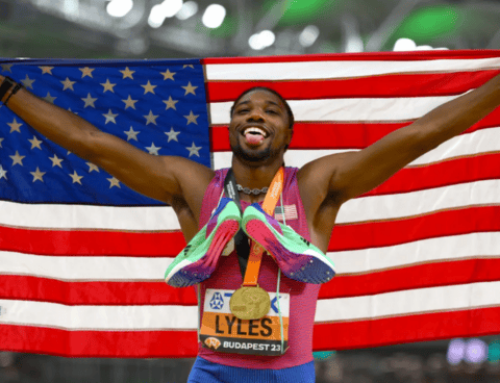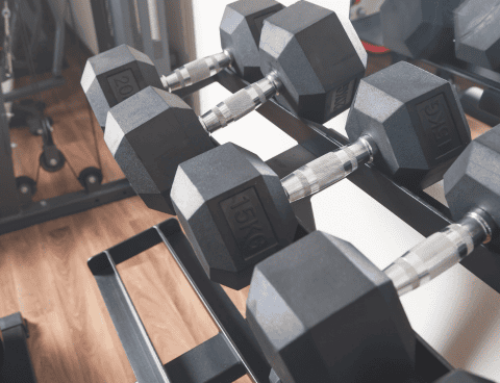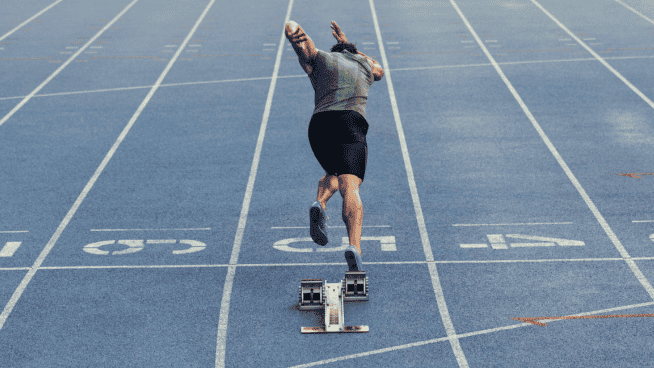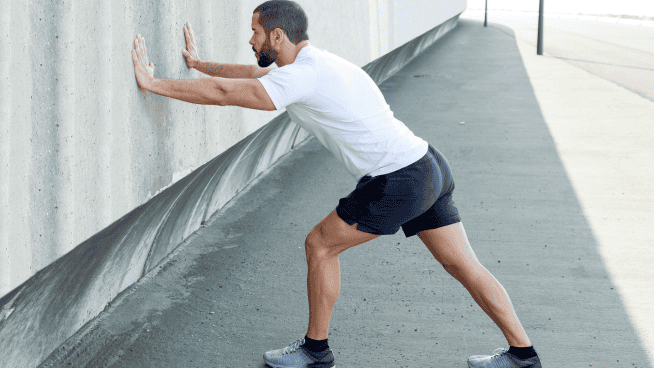8 Single-Leg Exercises for Sports Performance and Health
Single-leg strength is a critical and overlooked aspect of sports performance training. Too many athletes would rather load up a barbell Squat or Deadlift heavy weight than train a single leg.
Not to say Squats and Deadlifts aren’t effective; they’re two of the best exercises in existence. But if you have any hope of becoming a more well-rounded athlete who’s resilient to injury, then you need single-leg exercises in your workouts.
Single-leg exercises have a number of benefits that you can’t ignore:
Single-leg training creates balanced strength
Sports are often played on a single leg. You might have to leap off your left foot to score a layup or plant hard on your right foot when changing directions. Realistically, there are only a few times when you’re actually on both feet at the same time. Single-leg strength allows you to create equal strength in both legs so you’re strong and powerful in every direction in which you need to move.
Single-leg training allows you to train heavy
Don’t be fooled by single-leg exercises. You can still load up on the weight and develop a serious amount of strength—and still impress your friends. In fact, it’s usually possible to lift more with each leg individually than you can with a two-legged exercise. For example, you might be able to use 200 pounds on the Bulgarian Split Squat on each leg compared to 375 pounds on the Back Squat. That’s more total weight and a greater challenge per leg.
Single-leg training helps prevent injuries
Single-leg exercises are unstable by nature. This activates stabilizer muscles that help to protect your knee and ankle during dynamic movements. And as mentioned above, it helps eliminate weakness on your non-dominant leg to reduce the risk of injury in multi-directional movements.
With that said, single-leg training isn’t as simple as doing a few Lunges here and there. You need to include single-leg exercises that cover the different ways the body moves—the same reason why most programs include both Squats and Deadlifts.
To help you get a head start on single-leg training, strength coaches Tim DiFrancesco and Matthew Ibrahim created an eight-part video series that shows several single-leg exercises that you should consider adding to your workouts.
Split Squat
[instagram src=”https://www.instagram.com/p/BTmAEhtgHQl/”]Reverse Lunge
[instagram src=”https://www.instagram.com/p/BTtna-KgSrg/”]Lateral Goblet Squat Variations
[instagram src=”https://www.instagram.com/p/BT4AidaF8xQ/”]Dynamic Lateral Lunge
[instagram src=”https://www.instagram.com/p/BT8x3QwAkjt/”]Single-Leg Glute Bridge
[instagram src=”https://www.instagram.com/p/BUJo6GhApUJ/”]Single-Leg Deadlift/RDL Variations
[instagram src=”https://www.instagram.com/p/BUPMVJnlfcP/”]Dumbbell Step-Up
[instagram src=”https://www.instagram.com/p/BUclBtEg0SO/”]Goblet Lateral Step-Up
[instagram src=”https://www.instagram.com/p/BUhMRKxFRYz/”]READ MORE:
RECOMMENDED FOR YOU
8 Single-Leg Exercises for Sports Performance and Health
Single-leg strength is a critical and overlooked aspect of sports performance training. Too many athletes would rather load up a barbell Squat or Deadlift heavy weight than train a single leg.
Not to say Squats and Deadlifts aren’t effective; they’re two of the best exercises in existence. But if you have any hope of becoming a more well-rounded athlete who’s resilient to injury, then you need single-leg exercises in your workouts.
Single-leg exercises have a number of benefits that you can’t ignore:
Single-leg training creates balanced strength
Sports are often played on a single leg. You might have to leap off your left foot to score a layup or plant hard on your right foot when changing directions. Realistically, there are only a few times when you’re actually on both feet at the same time. Single-leg strength allows you to create equal strength in both legs so you’re strong and powerful in every direction in which you need to move.
Single-leg training allows you to train heavy
Don’t be fooled by single-leg exercises. You can still load up on the weight and develop a serious amount of strength—and still impress your friends. In fact, it’s usually possible to lift more with each leg individually than you can with a two-legged exercise. For example, you might be able to use 200 pounds on the Bulgarian Split Squat on each leg compared to 375 pounds on the Back Squat. That’s more total weight and a greater challenge per leg.
Single-leg training helps prevent injuries
Single-leg exercises are unstable by nature. This activates stabilizer muscles that help to protect your knee and ankle during dynamic movements. And as mentioned above, it helps eliminate weakness on your non-dominant leg to reduce the risk of injury in multi-directional movements.
With that said, single-leg training isn’t as simple as doing a few Lunges here and there. You need to include single-leg exercises that cover the different ways the body moves—the same reason why most programs include both Squats and Deadlifts.
To help you get a head start on single-leg training, strength coaches Tim DiFrancesco and Matthew Ibrahim created an eight-part video series that shows several single-leg exercises that you should consider adding to your workouts.
Split Squat
[instagram src=”https://www.instagram.com/p/BTmAEhtgHQl/”]Reverse Lunge
[instagram src=”https://www.instagram.com/p/BTtna-KgSrg/”]Lateral Goblet Squat Variations
[instagram src=”https://www.instagram.com/p/BT4AidaF8xQ/”]Dynamic Lateral Lunge
[instagram src=”https://www.instagram.com/p/BT8x3QwAkjt/”]Single-Leg Glute Bridge
[instagram src=”https://www.instagram.com/p/BUJo6GhApUJ/”]Single-Leg Deadlift/RDL Variations
[instagram src=”https://www.instagram.com/p/BUPMVJnlfcP/”]Dumbbell Step-Up
[instagram src=”https://www.instagram.com/p/BUclBtEg0SO/”]Goblet Lateral Step-Up
[instagram src=”https://www.instagram.com/p/BUhMRKxFRYz/”]READ MORE:










